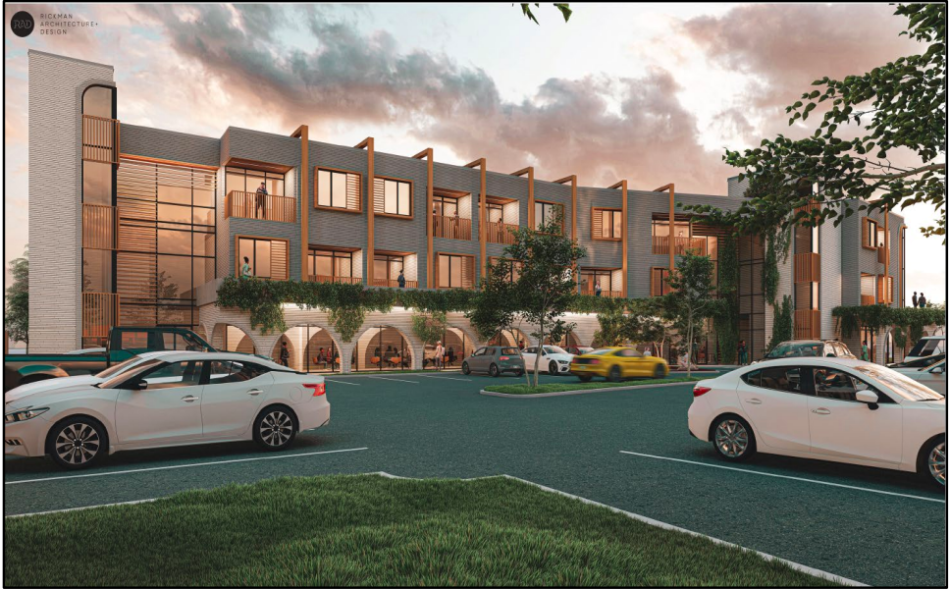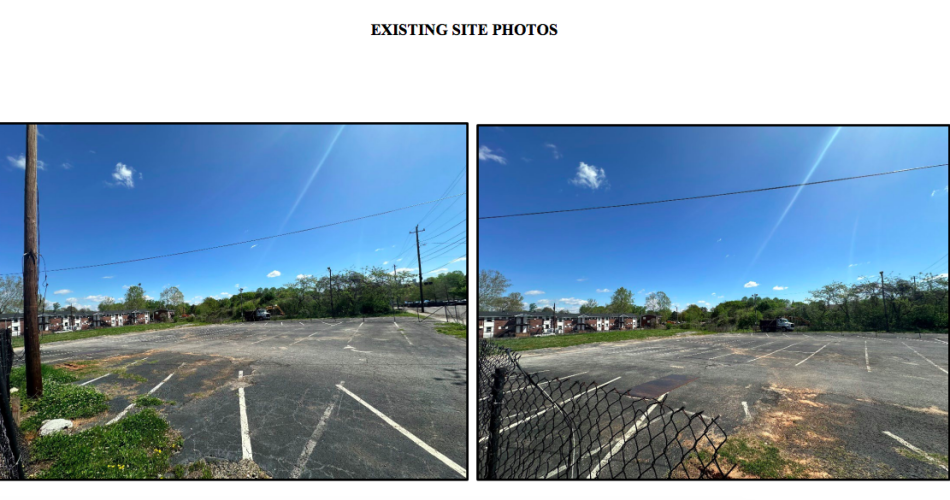
Plans Revealed for Unique Affordable Housing Project in Atlanta’s Westside
The City of Refuge, a nonprofit organization, has unveiled plans for an innovative affordable housing project in Atlanta’s Westside. The three-story, 37,000-square-foot building will be located at 1343 Joseph E. Boone Boulevard, on a currently vacant lot.
The site is situated south of Westside Park and adjacent to The 345 project, which was opened by City of Refuge last year as supportive housing for men. The new development will consist of 25 units of affordable housing and 7,640 square feet of commercial and amenity space on the ground level.
Wide Range of Uses and Sustainable Development Goals
The building, designed by Rickman Architecture + Design, will feature a social club, market, clinic, and a credit union at the base level. This diverse range of uses aligns with the Sustainable Development Goals (SDGs) set by the United Nations, particularly SDG 11: Sustainable Cities and Communities.

Funding and Rental Options
The estimated cost of the project is $15.7 million, with the majority of funding coming from donations. The Chick-fil-A Foundation has pledged $3 million, and the Community Foundation for Greater Atlanta has committed $2 million. Additionally, Invest Atlanta may provide $2 million in funding through a BeltLine TAD Increment Improvement Grant.
The apartments will be available for rent at 30 to 80 percent of the area median income or less. Most units will be two-bedroom rentals, with some three-bedroom and one four-bedroom option. The rental prices will range from $689 to $796 per month.
Amenities and Construction Schedule
In addition to the commercial spaces, the building will offer amenities such as a community room, washer and dryer connections, and an outdoor sitting area. The construction is scheduled to begin this year and is expected to be completed in 2025.

City of Refuge’s Previous Projects
This is not the first affordable housing project undertaken by City of Refuge. They previously completed The 1300, a rental community, in summer 2020. They also collaborated with GROWTH Homes to build five standalone houses for families adjacent to their Joseph E. Boone Boulevard campus.
For more information and updates, follow us on social media:
• Bankhead news, discussion (Urbanize Atlanta)
SDGs, Targets, and Indicators Analysis
1. Which SDGs are addressed or connected to the issues highlighted in the article?
- SDG 1: No Poverty
- SDG 3: Good Health and Well-being
- SDG 8: Decent Work and Economic Growth
- SDG 10: Reduced Inequalities
- SDG 11: Sustainable Cities and Communities
- SDG 17: Partnerships for the Goals
The issues highlighted in the article are related to affordable housing, community development, and poverty reduction, which align with these SDGs.
2. What specific targets under those SDGs can be identified based on the article’s content?
- Target 1.2: By 2030, reduce at least by half the proportion of men, women, and children of all ages living in poverty in all its dimensions according to national definitions.
- Target 3.8: Achieve universal health coverage, including financial risk protection, access to quality essential health-care services, and access to safe, effective, quality, and affordable essential medicines and vaccines for all.
- Target 8.3: Promote development-oriented policies that support productive activities, decent job creation, entrepreneurship, creativity, and innovation, and encourage the formalization and growth of micro-, small- and medium-sized enterprises, including through access to financial services.
- Target 10.2: By 2030, empower and promote the social, economic, and political inclusion of all, irrespective of age, sex, disability, race, ethnicity, origin, religion, or economic or other status.
- Target 11.1: By 2030, ensure access for all to adequate, safe, and affordable housing and basic services and upgrade slums.
- Target 17.17: Encourage and promote effective public, public-private, and civil society partnerships, building on the experience and resourcing strategies of partnerships.
These targets are relevant to the goals of the project mentioned in the article.
3. Are there any indicators mentioned or implied in the article that can be used to measure progress towards the identified targets?
- Indicator 1.2.1: Proportion of population living below the national poverty line, by sex and age.
- Indicator 3.8.1: Coverage of essential health services (defined as the average coverage of essential services based on tracer interventions that include reproductive, maternal, newborn and child health, infectious diseases, non-communicable diseases, and service capacity and access).
- Indicator 8.3.1: Proportion of informal employment in non-agriculture employment, by sex.
- Indicator 10.2.1: Proportion of people living below 50 percent of median income, by age, sex, and persons with disabilities.
- Indicator 11.1.1: Proportion of urban population living in slums, informal settlements, or inadequate housing.
- Indicator 17.17.1: Amount of United States dollars committed to public-private and civil society partnerships.
These indicators can be used to measure progress towards the identified targets.
Table: SDGs, Targets, and Indicators
| SDGs | Targets | Indicators |
|---|---|---|
| SDG 1: No Poverty | Target 1.2: By 2030, reduce at least by half the proportion of men, women, and children of all ages living in poverty in all its dimensions according to national definitions. | Indicator 1.2.1: Proportion of population living below the national poverty line, by sex and age. |
| SDG 3: Good Health and Well-being | Target 3.8: Achieve universal health coverage, including financial risk protection, access to quality essential health-care services, and access to safe, effective, quality, and affordable essential medicines and vaccines for all. | Indicator 3.8.1: Coverage of essential health services (defined as the average coverage of essential services based on tracer interventions that include reproductive, maternal, newborn and child health, infectious diseases, non-communicable diseases, and service capacity and access). |
| SDG 8: Decent Work and Economic Growth | Target 8.3: Promote development-oriented policies that support productive activities, decent job creation, entrepreneurship, creativity, and innovation, and encourage the formalization and growth of micro-, small- and medium-sized enterprises, including through access to financial services. | Indicator 8.3.1: Proportion of informal employment in non-agriculture employment, by sex. |
| SDG 10: Reduced Inequalities | Target 10.2: By 2030, empower and promote the social, economic, and political inclusion of all, irrespective of age, sex, disability, race, ethnicity, origin, religion, or economic or other status. | Indicator 10.2.1: Proportion of people living below 50 percent of median income, by age, sex, and persons with disabilities. |
| SDG 11: Sustainable Cities and Communities | Target 11.1: By 2030, ensure access for all to adequate, safe, and affordable housing and basic services and upgrade slums. | Indicator 11.1.1: Proportion of urban population living in slums, informal settlements, or inadequate housing. |
| SDG 17: Partnerships for the Goals | Target 17.17: Encourage and promote effective public, public-private, and civil society partnerships, building on the experience and resourcing strategies of partnerships. | Indicator 17.17.1: Amount of United States dollars committed to public-private and civil society partnerships. |
Copyright: Dive into this article, curated with care by SDG Investors Inc. Our advanced AI technology searches through vast amounts of data to spotlight how we are all moving forward with the Sustainable Development Goals. While we own the rights to this content, we invite you to share it to help spread knowledge and spark action on the SDGs.
Fuente: atlanta.urbanize.city

Join us, as fellow seekers of change, on a transformative journey at https://sdgtalks.ai/welcome, where you can become a member and actively contribute to shaping a brighter future.






